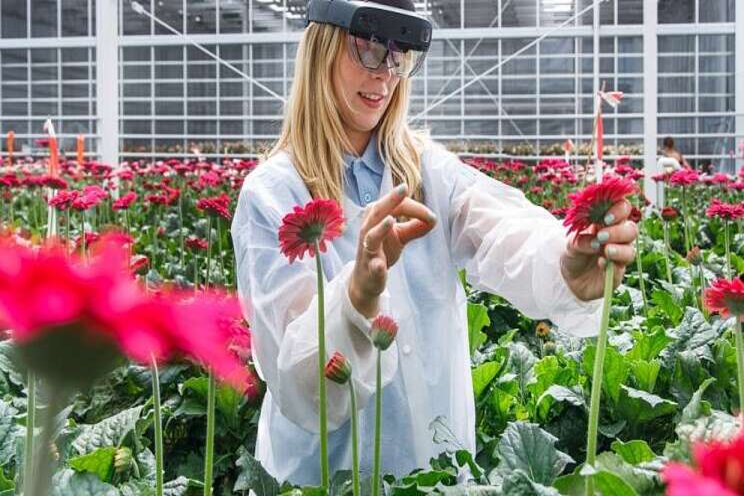AR glasses also work in a greenhouse without WiFi
Added on 25 January 2021

<section style="margin: 0px; padding: 0px; border: 0px; font-style: normal; font-variant-ligatures: normal; font-variant-caps: normal; font-variant-numeric: inherit; font-variant-east-asian: inherit; font-weight: 400; font-stretch: inherit; font-size: 16px; line-height: inherit; font-family: verdana, sans-serif; vertical-align: baseline; display: block; color: rgb(51, 51, 51); letter-spacing: normal; orphans: 2; text-align: start; text-indent: 0px; text-transform: none; white-space: normal; widows: 2; word-spacing: 0px; -webkit-text-stroke-width: 0px; text-decoration-thickness: initial; text-decoration-style: initial; text-decoration-color: initial;">
The Augmented Horticulture project started last year. During four years, WUR, together with a consortium of several horticultural suppliers, will develop four use cases for Augmented Reality (AR), each with a number of underlying techniques. The project uses Microsoft's HoloLens 2, which is currently the one of the most powerful AR glasses.
One of the underlying techniques that is being investigated is localization. Originally, the group did this by recognizing QR code. On the basis of that code, the glasses could retrieve relevant information about the crop from a database. This requires a good internet connection, for example via WiFi. The greenhouse jams the signal, and so the researchers looked for an alternative. This was found by using the 3D map that the AR glasses make of an environment. This map appears to be very useful for determining the position of the crop, for example. A and a QR code and internet connection therefore are not necessary.
This technique can be combined well with another technique: having the AR glasses recognize spoken text. The user can therefore walk through the greenhouse and pass on spoken commands or information about the crop to the AR glasses. This can be used to link the information to the correct place on the map of the greenhouse.
Another technique that has been investigated is finding stress in the greenhouse. To do this the group is working to use the built in infrared camera of the Hololens. Combining it with the 'normal' color camera of the Hololens NDVI images can be made of what the user is looking at. In addition, even more information to be extracted from the images. For example, the camera can hopefully be used to recognize how big the tomatoes in a greenhouse are, or how many gerberas are growing. This information could be used, for example, in the harvest forecast, or scouting for disease more easily.
The Augmented Horticulture project is funded by the Top Sector Horticulture & Starting Materials and the consortium consisting of Syngenta Seeds, Wageningen University & Research, Florensis, LetsGrow.com, Itelligence, Mprise Agriware and KPN.?
</section>
Source and Photo Courtesy of Wageningen University & Research
Source: Wageningen University & Research
More news















